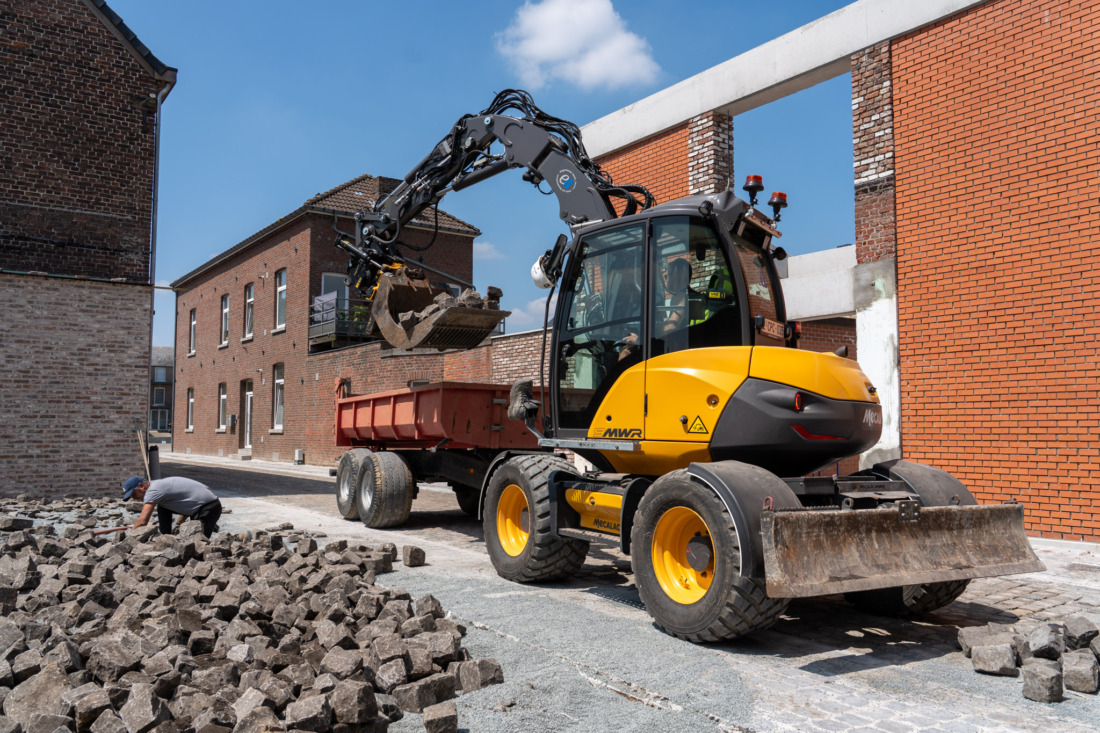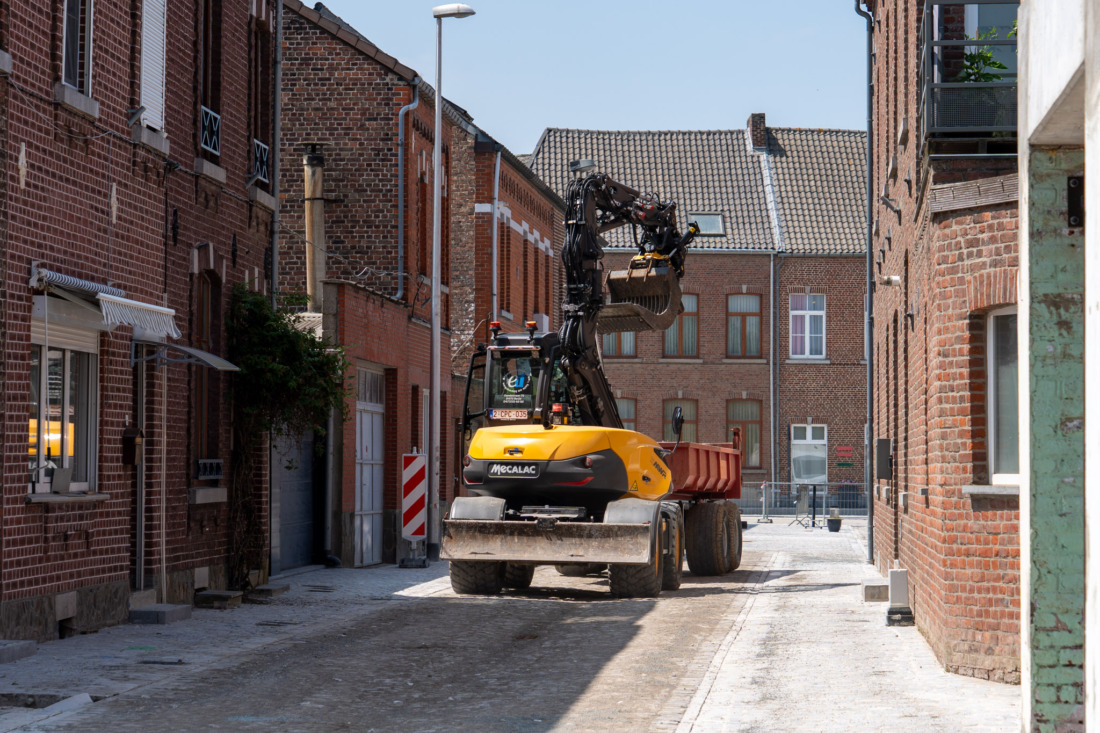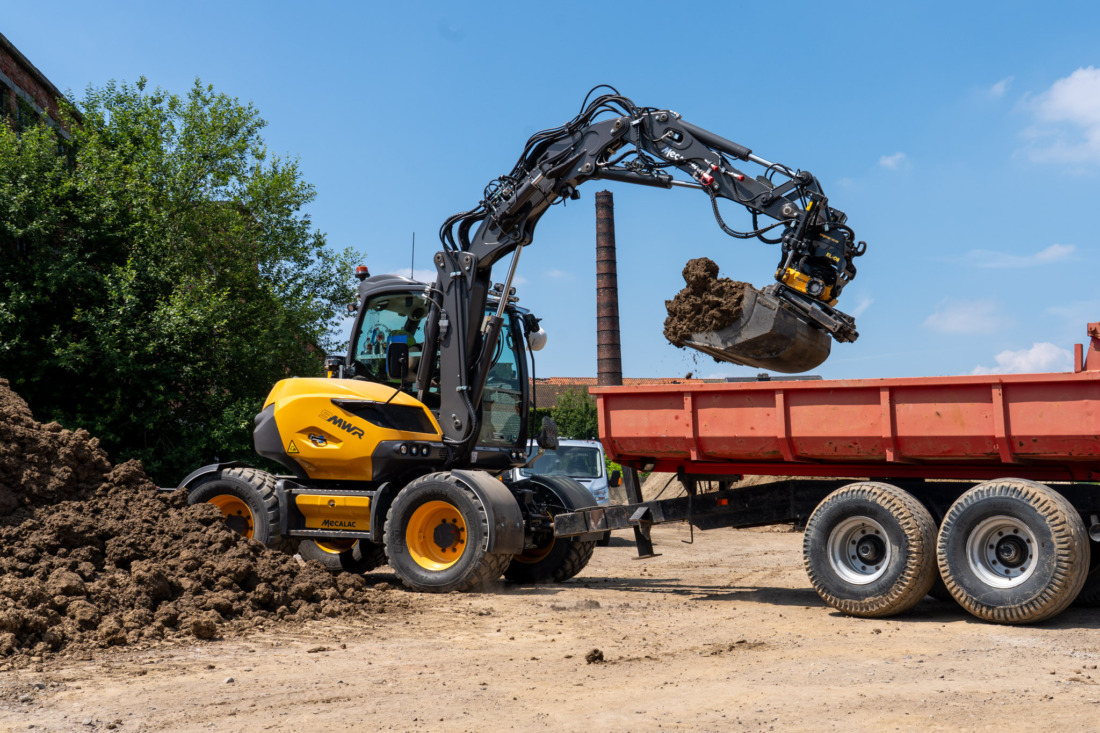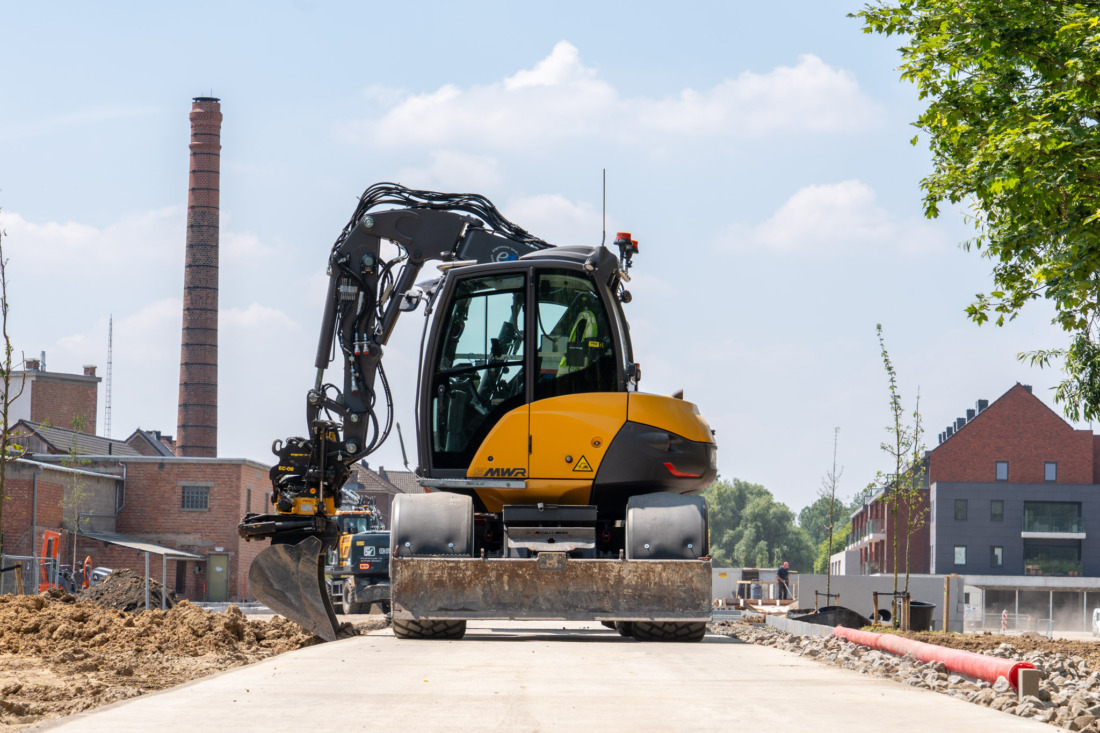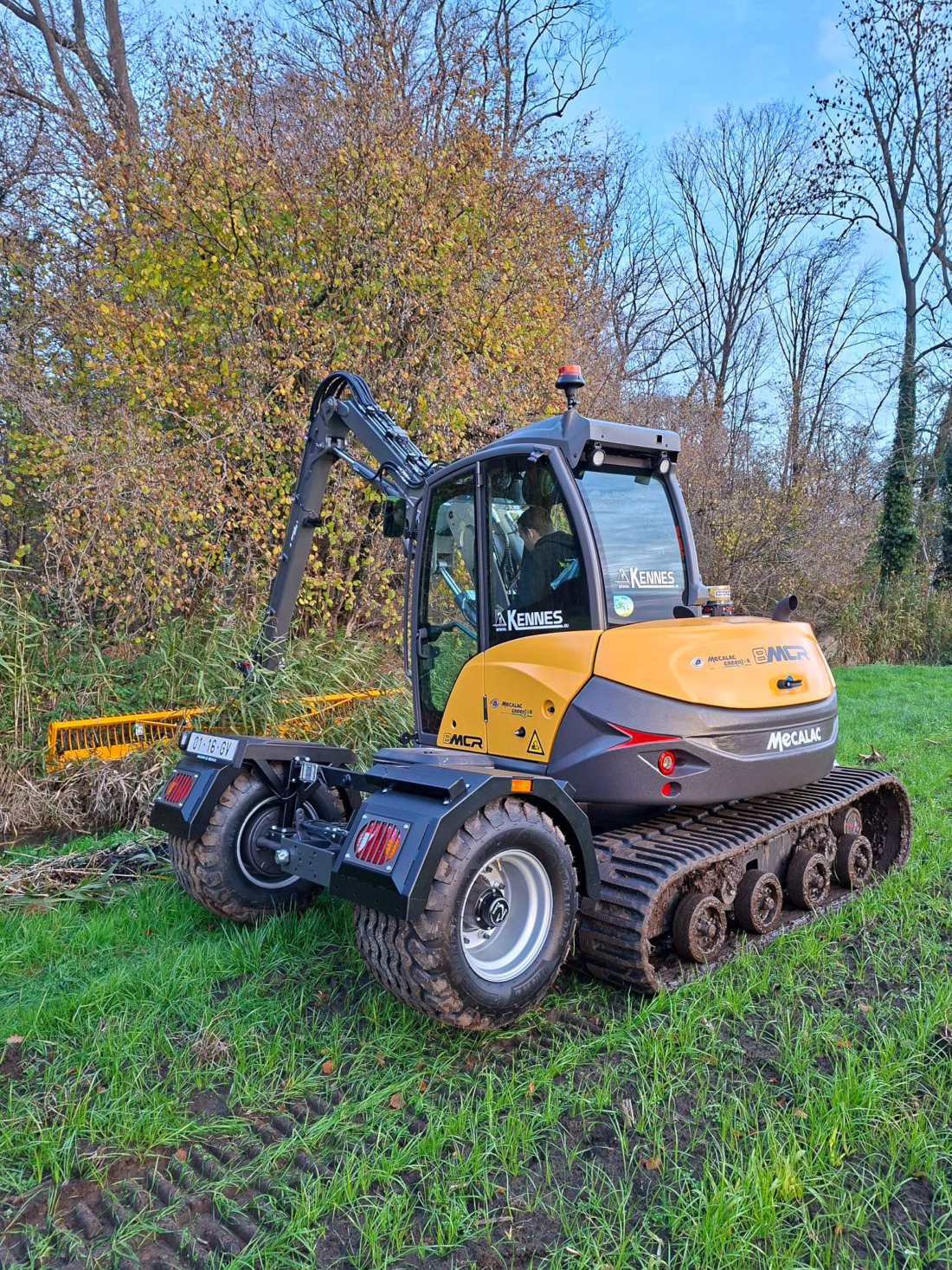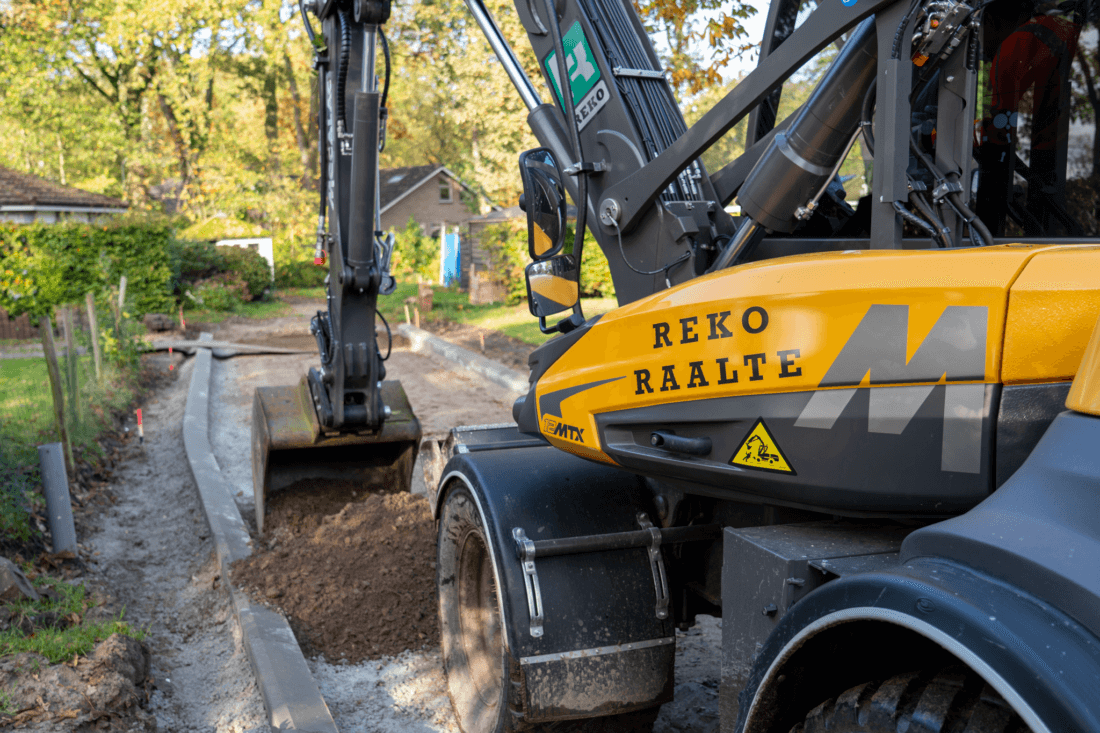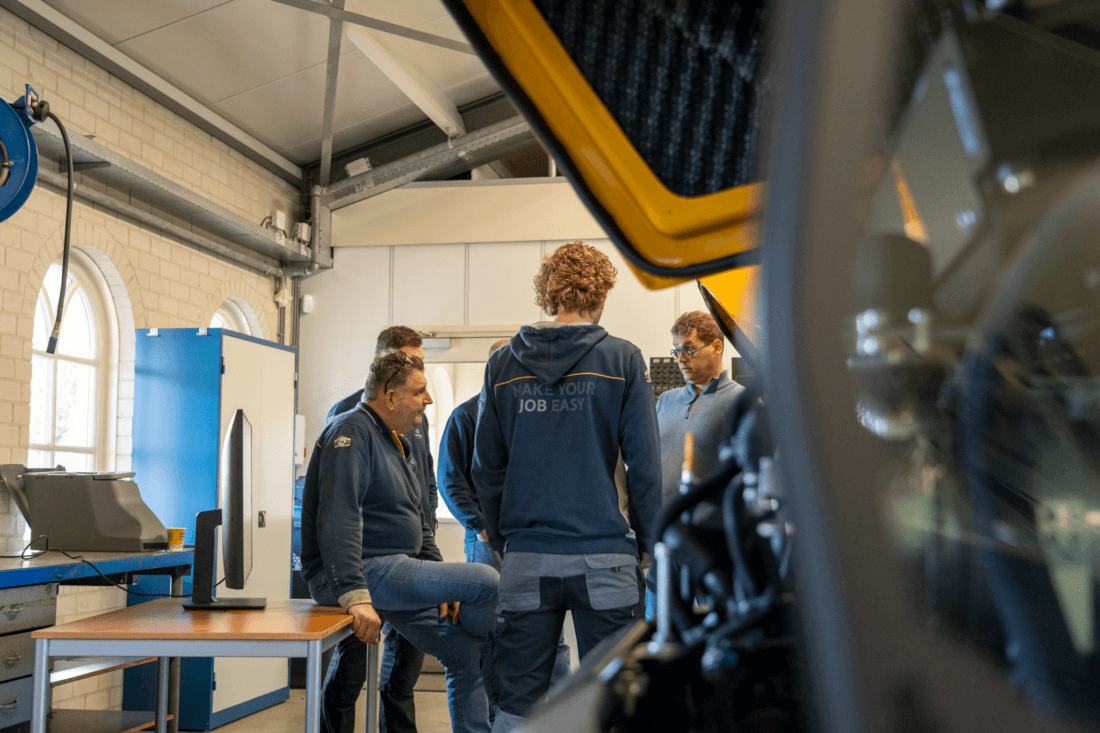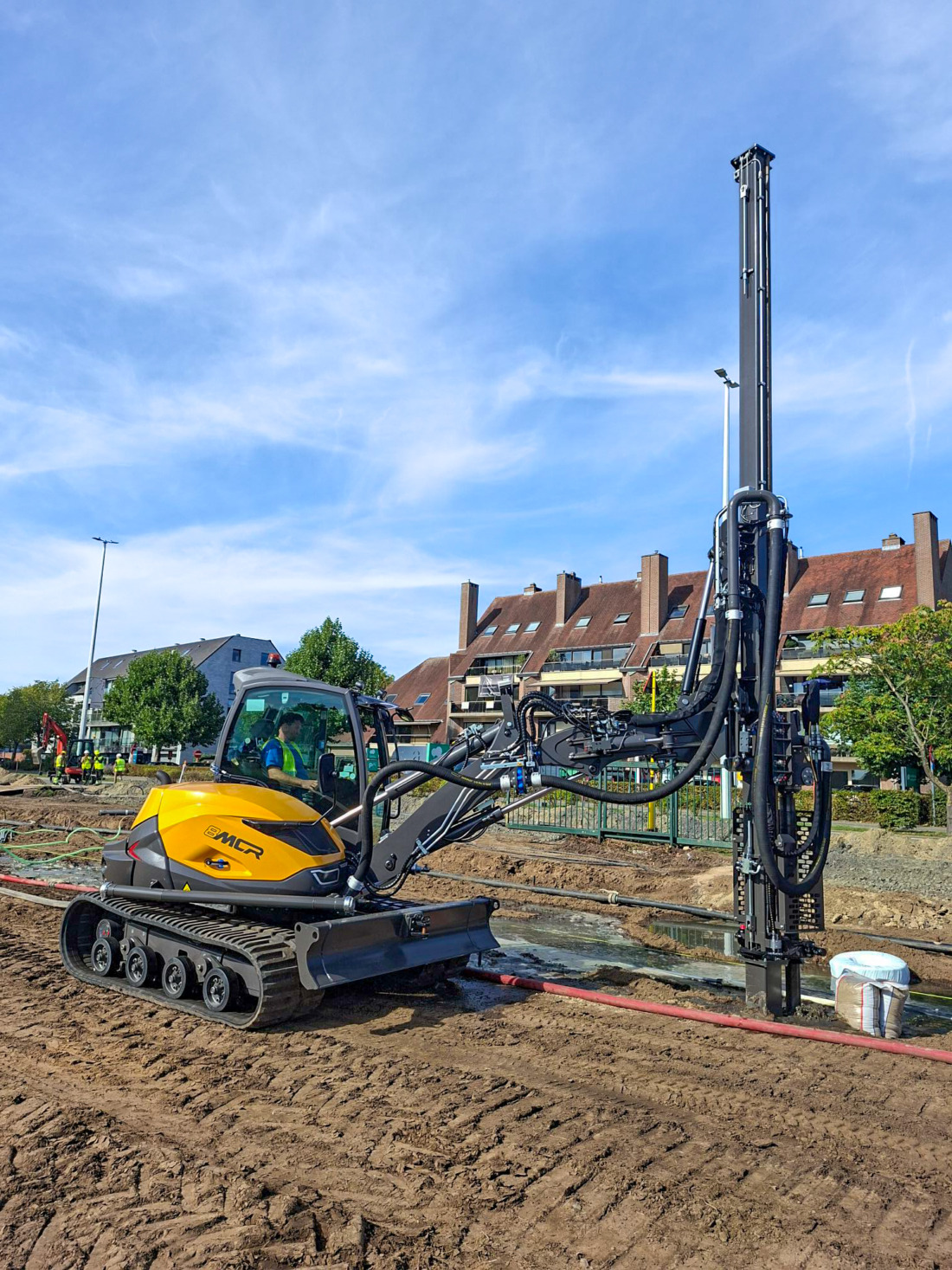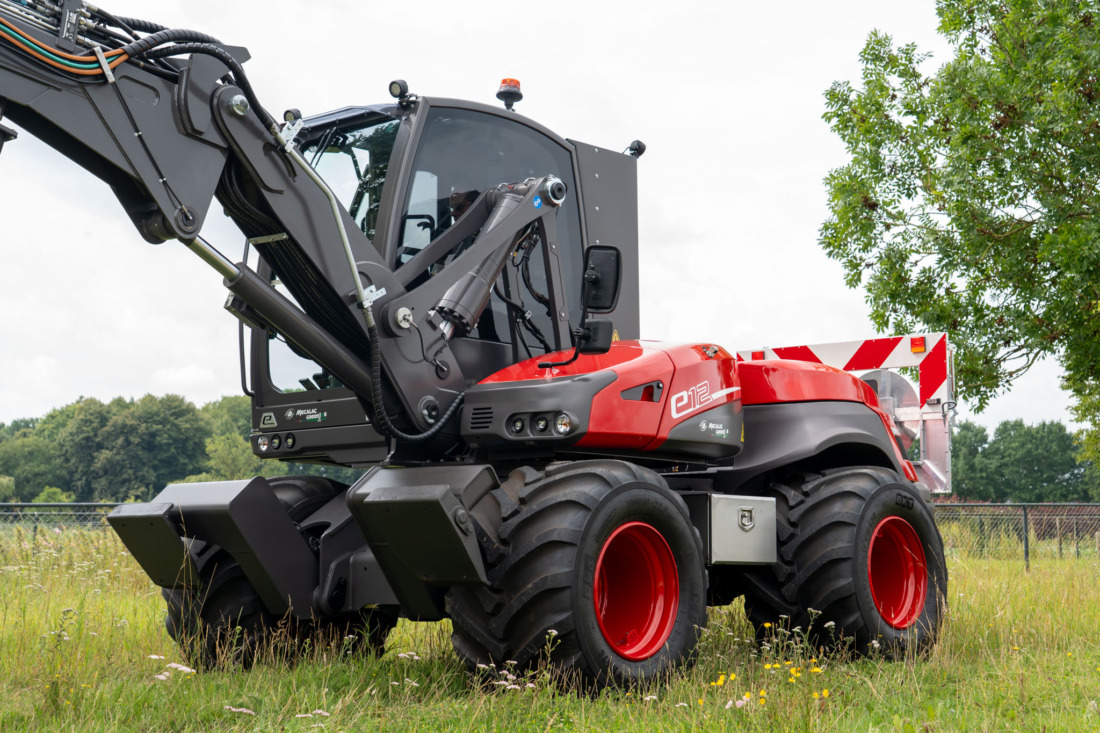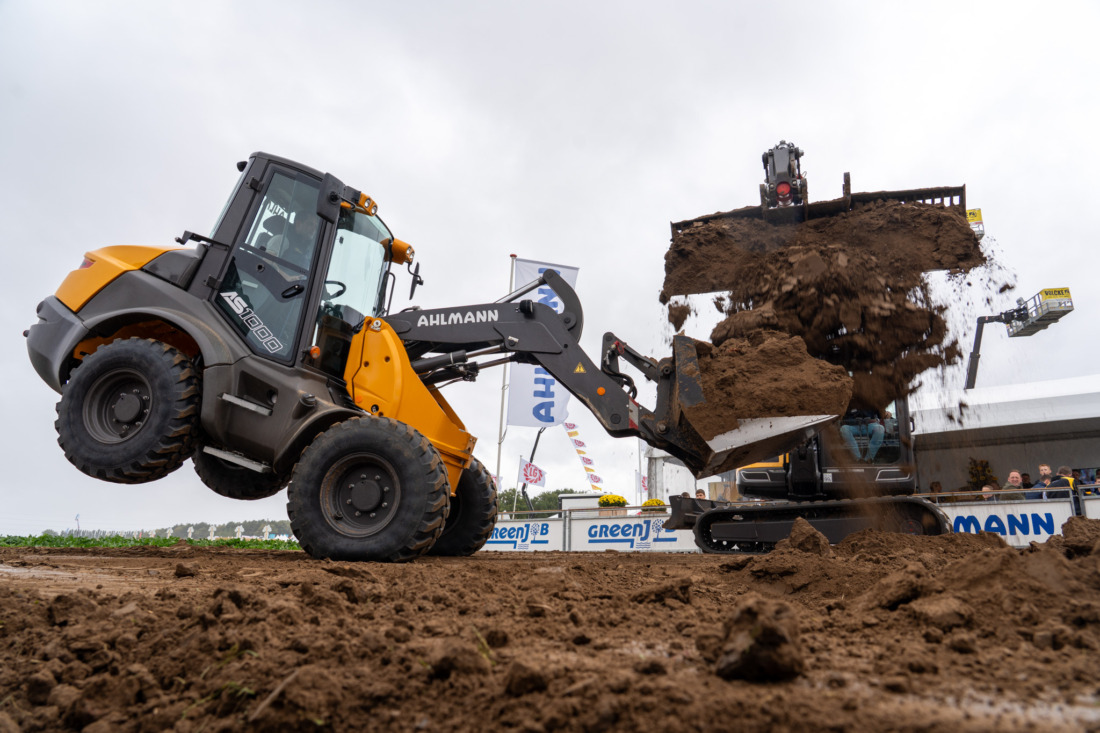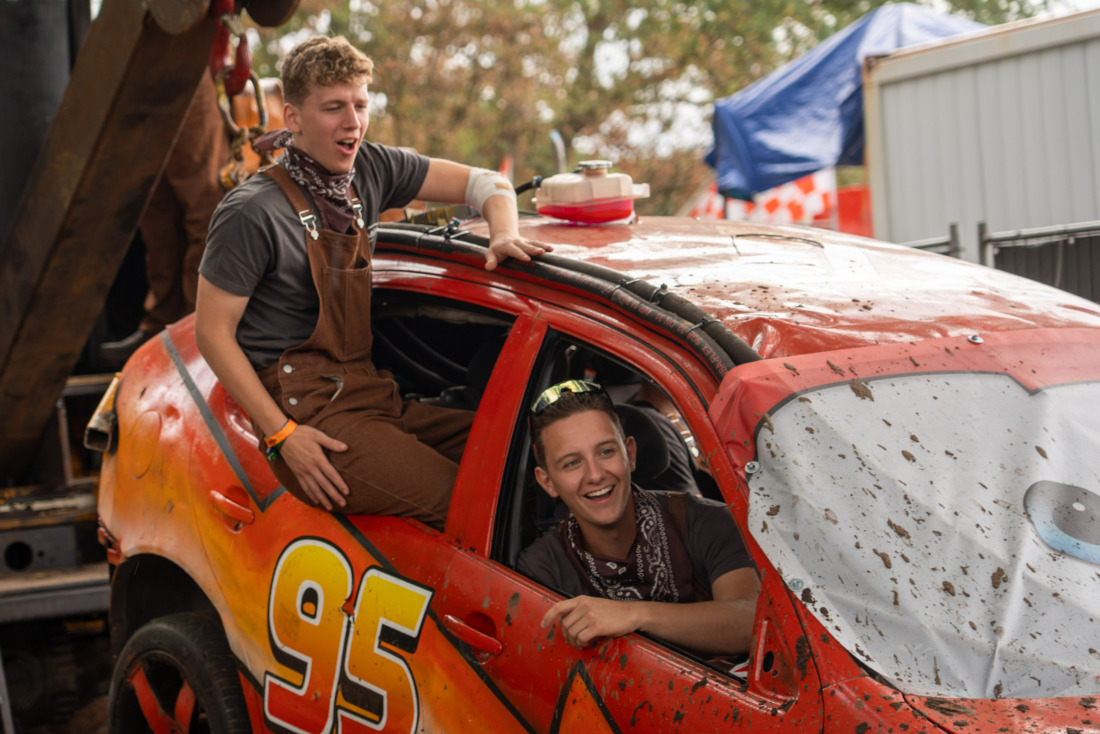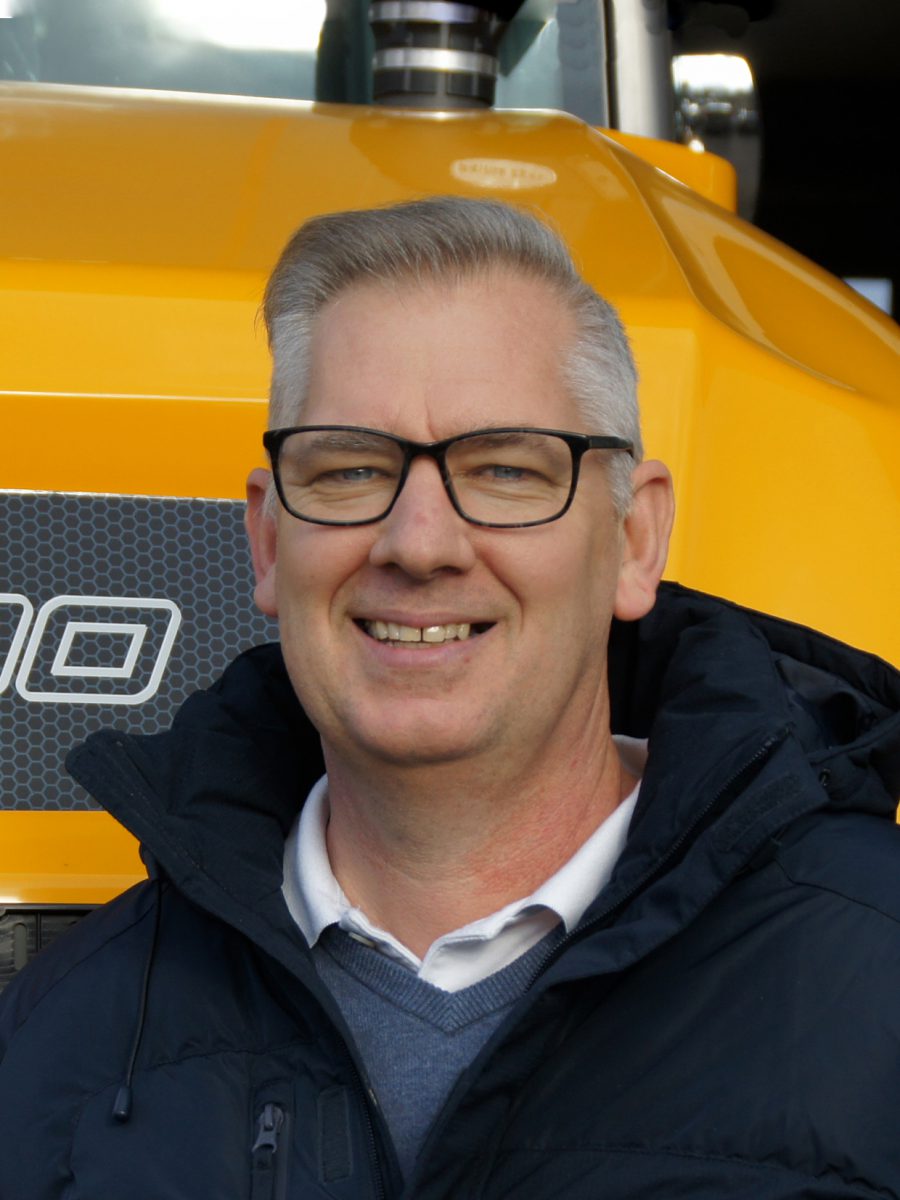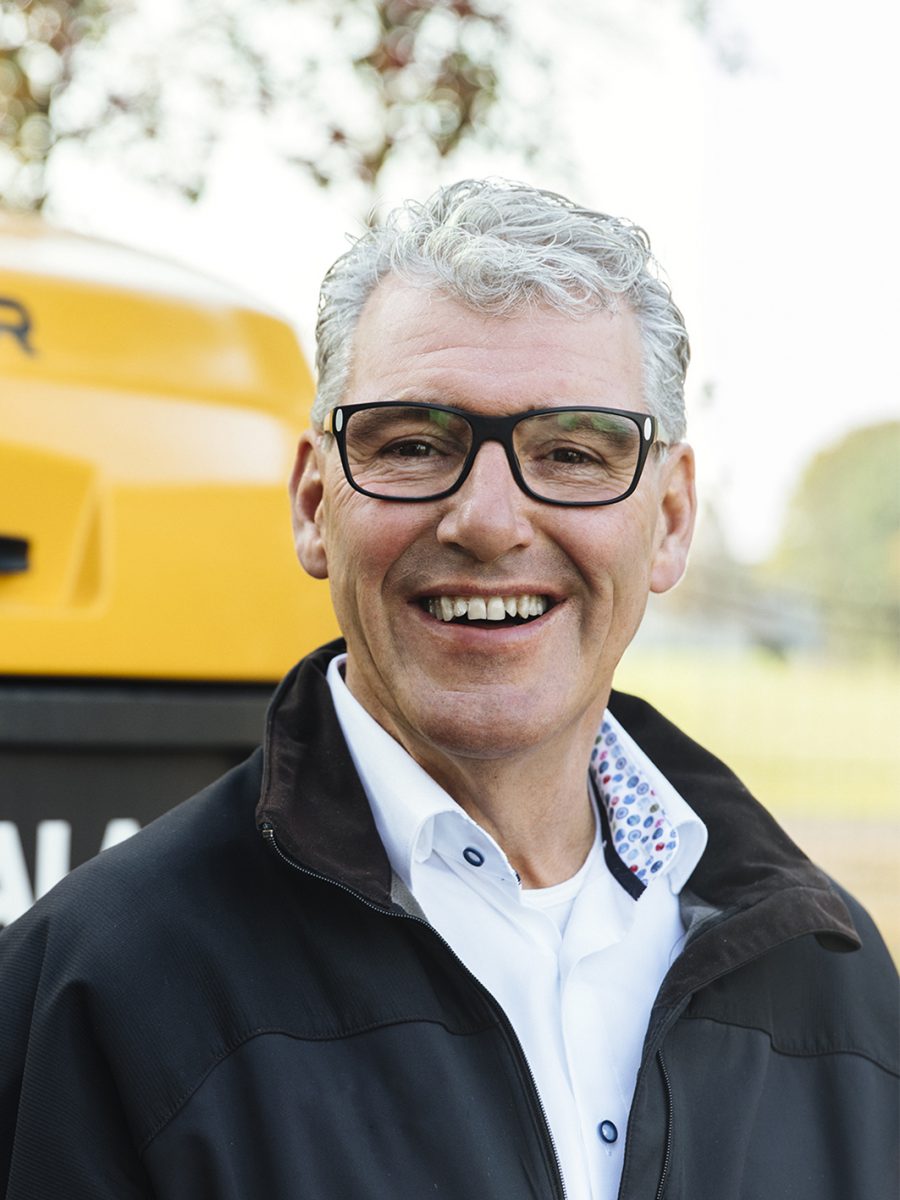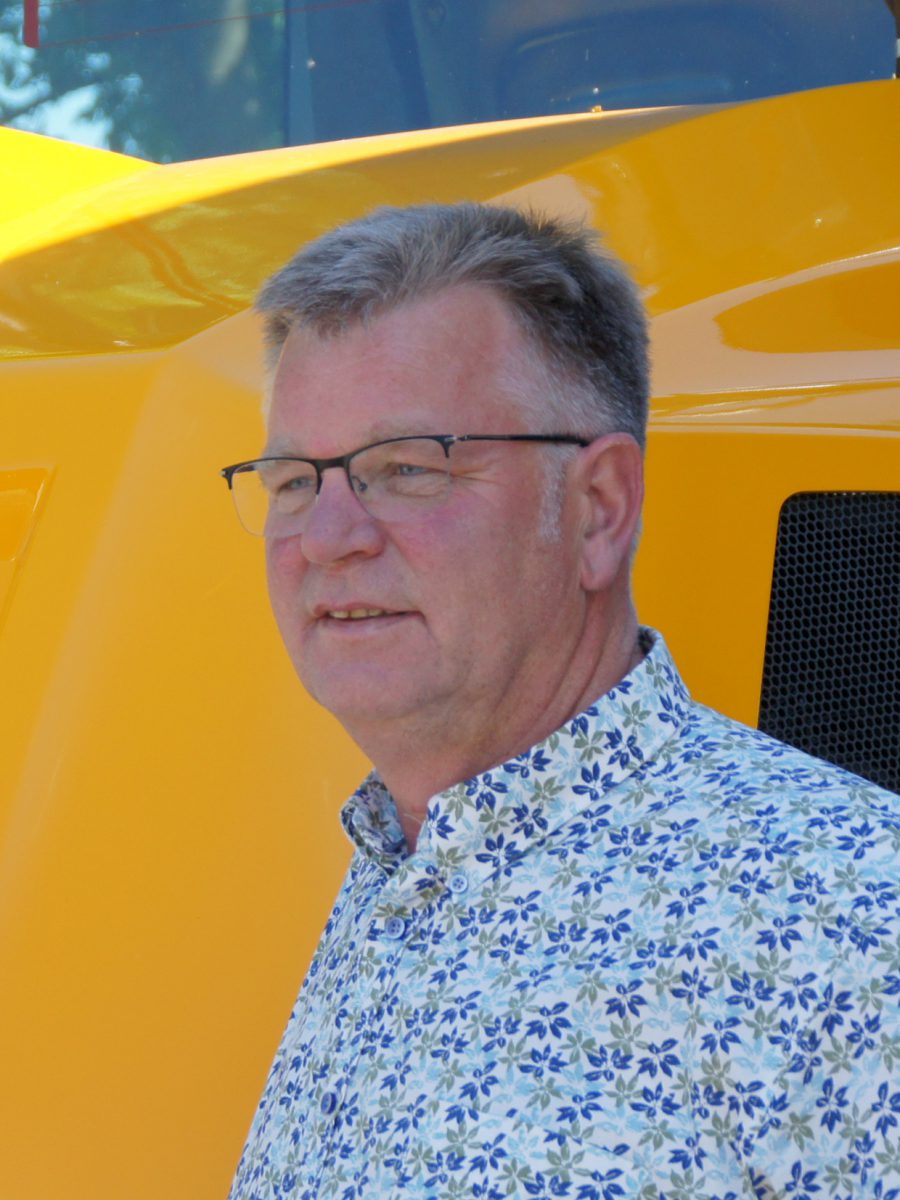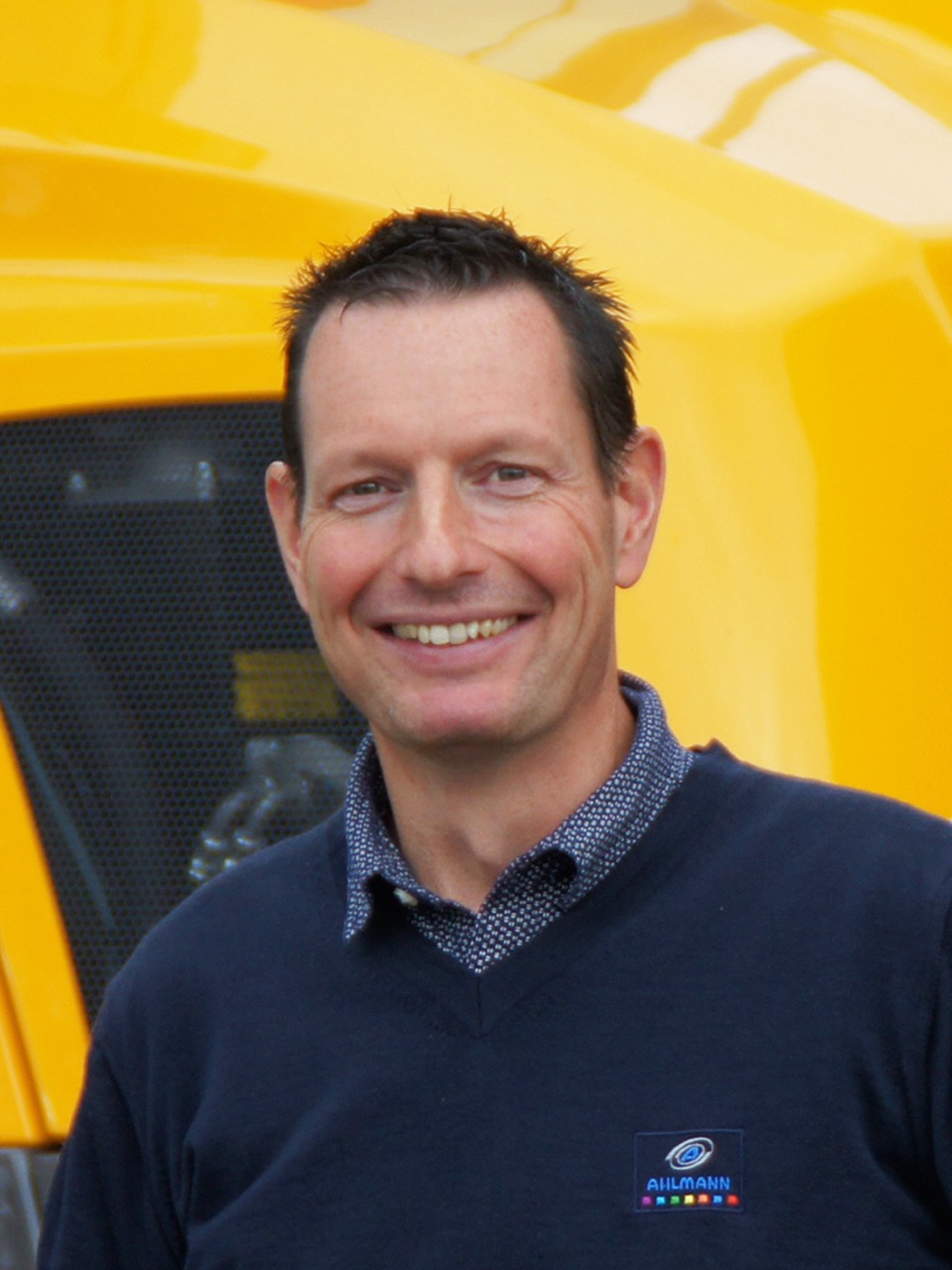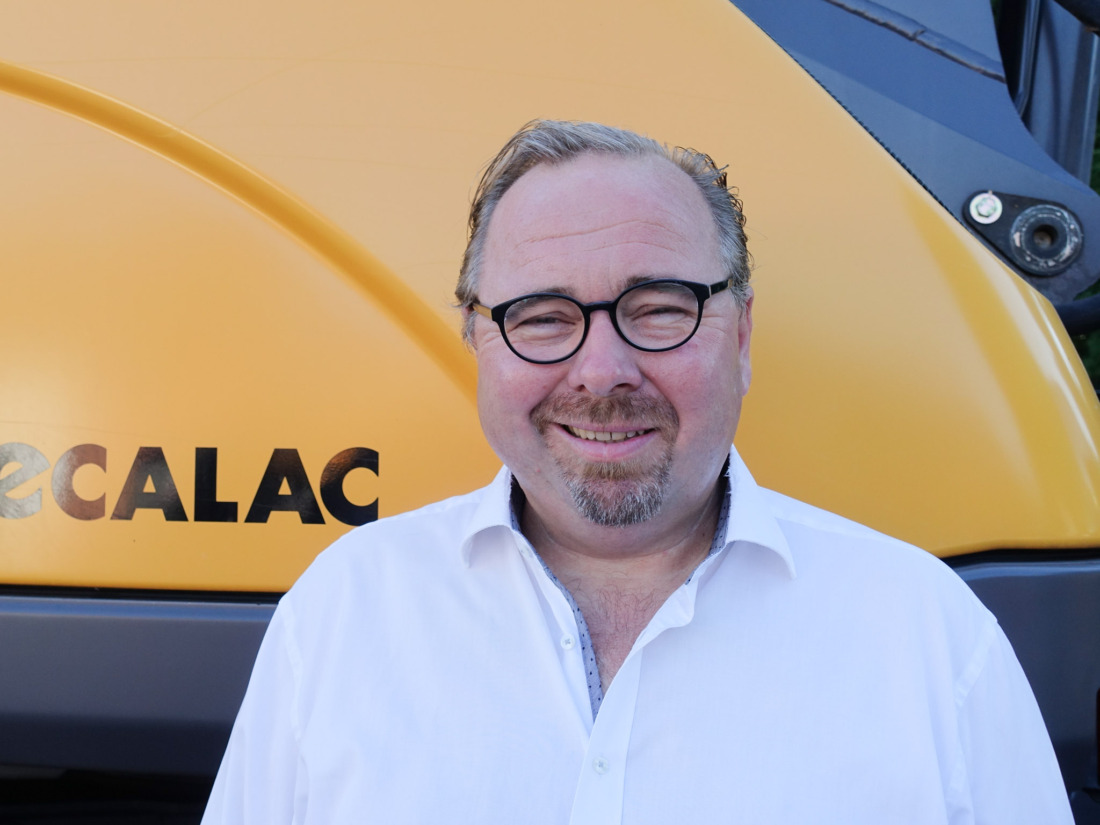
An all-rounder who should be given a chance
Evert Dierckx specializes in earthworks and landscaping. For his one-man company, he was looking for a machine that met some conditions; He wanted to be able to lift a lot in a small space, visibility had to be good and the machine should not be too high for transport. It also had to be strong in travel, because Dierckx had a unique concept in mind. It became the Mecalac 9MWR. An uncommon choice for some, for Dierckx exactly what he needed.
1,300 running hours later, we visited Evert at a yard where he was working. Marco de Roij of Ahlmann Nederland, Mecalac's distributor in Belgium and the Netherlands, also stopped by. Together with Marco, we watched while Dierckx finished the last minutes of that day.
Use as a shovel
“I'm surprised myself every time how short the machine runs,” De Roij said. “Standard features include two-wheel and four-wheel steering and dogwalk.” To level, Dierckx uses the machine like a shovel. “You don't see many people doing this in that situation. That's because the Mecalac is basically a combination wheel loader and excavator. By working this way, you're going to compact and level at the same time, and what's more, you're a lot faster. That immediately makes the machine unique. Hence also the boom construction. It is built to push. That's why you have the cylinder underneath: that makes it extremely strong to stop the boom. If the cylinder were at the top as with regular excavators, you'd end up just pushing it through when you start pushing like with a shovel.”
Stable machine
Dierckx says it took him a long time to make his choice. “I compared several machines, but the investment was higher, and the extra return more than makes up for that.”
With the 9MWR, he can lift a lot of weight and, with that weight, run in a small space. De Roij further explains that, too. “The combination of the articulation point at the top, the cylinder sitting at the bottom and the fact that you can pull the boom back so far that you're going to use it as a counterweight makes the machine strong and stable. On most excavators of this weight class, the boom sits in front of the cab as a whole. Then when you start lifting, the weight stays in front of it as well. Here you first pull the weight back and then you start lifting. The pivot point of the dipperstick is behind the blade. Combined with the lowered turntable, that makes the machine enormously stable.”
Dierckx adds another point: “The wheels are in a square. With just about all other brands, it's a rectangle. This means that when I have to lift something heavy and raise my blade, I can turn and drive off. Another has to drive backwards more often because with a lot of weight you can't swing - there's a risk of tipping over. That's especially a plus in urban areas. You can get close, lift a lot, slew and drive off. You can just do so much more.”
The concept of the Mecalac pays for itself. After all, you only need one machine, whereas otherwise you would need both a wheel loader and a crawler excavator. De Roij says the 9MWR is equipped with a separate hydrostatic pump with a much heavier travel motor to transfer the forces released by shovel work.
9MWR in combination with cart
Nowadays more and more use is also being made of a swivel tilt. Also by Dierckx: “That is an absolute added value in terms of flexibility.” The swivel tilt piece ensures that as an operator you can do more yourself and have to rely less on a manual worker. But Dierckx went one step further. “Partly because of the strong travel motor, I can hang a cart behind the machine. I use that quite a lot. If you need to clear a yard, for example, you don't have to rely on someone with a tractor and dumper. So it saves personnel. Another example: a bicycle path had to be leveled. A big crane couldn't get in, but I could work with my machine and carry material in the cart. It has really become a way to distinguish myself within the industry with this combination. I can do a lot more in small areas and often save an extra machine because of my combination.”
Not everyone immediately sees the power of Mecalac
Both Dierckx and De Roij agree: not everyone immediately sees the power of Mecalac. “It's not a machine to judge within five minutes,” said Dierckx. “You have to give it a chance, and that's what I did. You also can't think like a crane operator who just wants to move mountains of sand. You just start working with it differently.”
De Roij adds: “Sometimes people mainly look at the price tag. But then I say: you have to make a well-considered calculation and take everything into account. What does an alternative cost in terms of additional manual workers or machines?”
Dierckx now has 1,300 hours on his counter. “I am satisfied with the service - as far as I needed it at all - the salespeople, and the machine itself. It is depreciated at five years, but I hope to use it twice as long.”
Dierckx also believes in the future of this type of machine: “There is less and less space on construction sites. You have to look at compact machines.”
